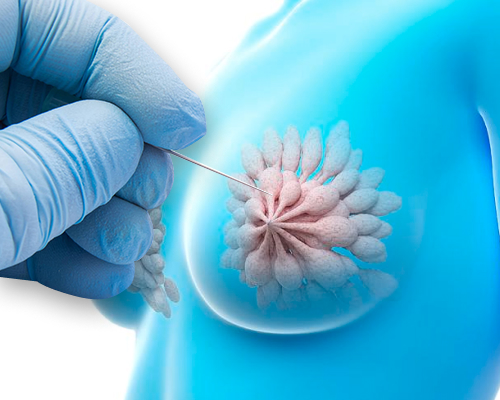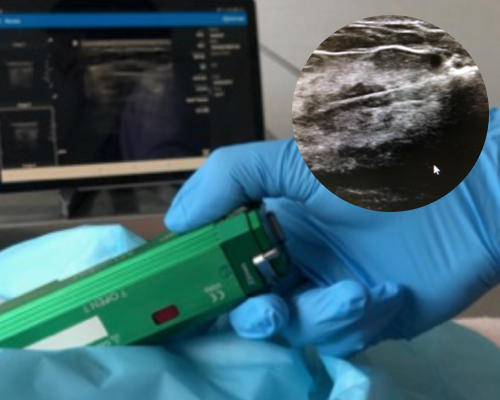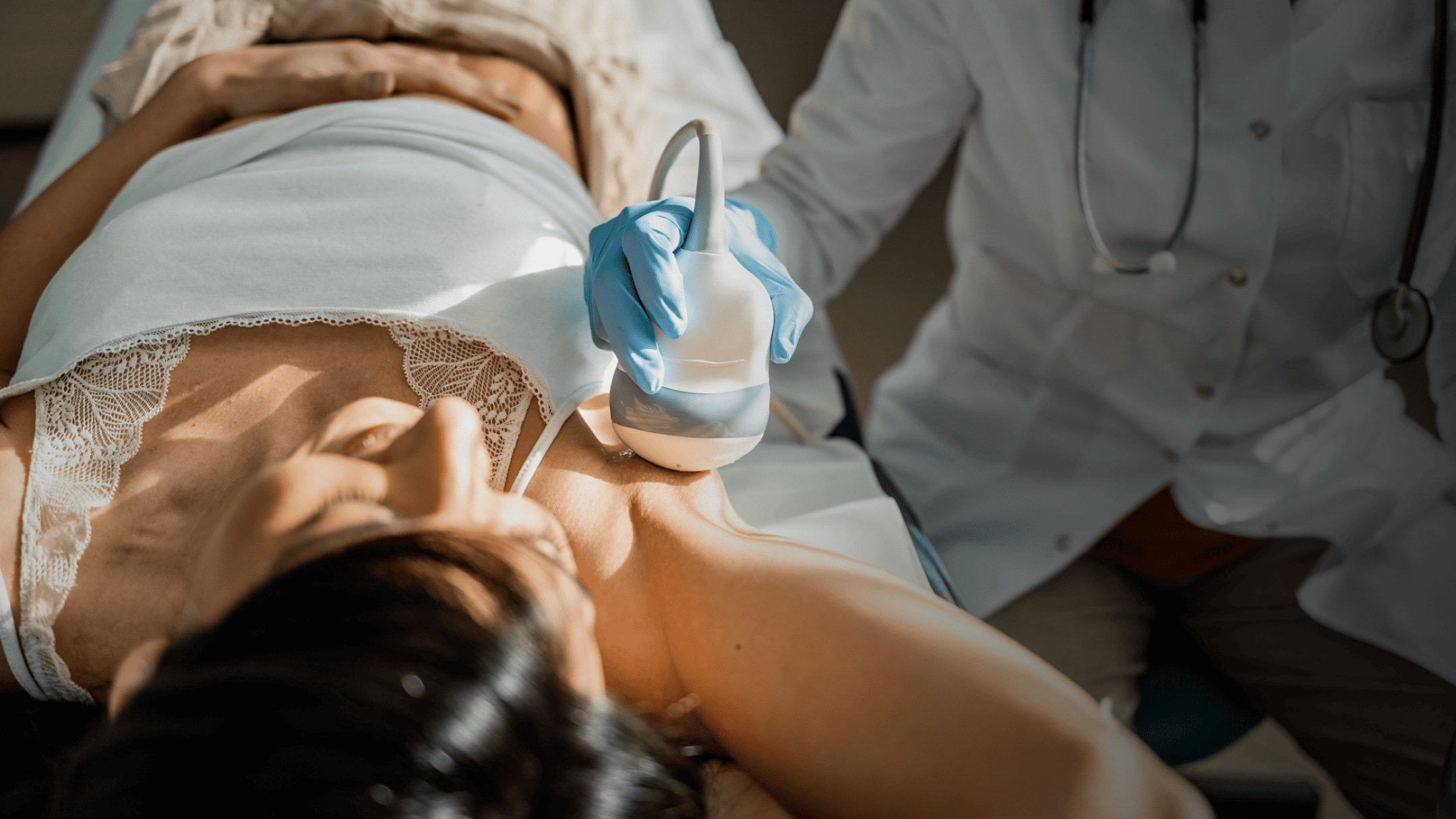“It all started with a persistent pain in the left breast, and I was referred by my General Practitioner for a mammogram and ultrasound. Both the mammogram and ultrasound results showed an abnormal lump, and I was further scheduled for a breast biopsy to determine if the lump was benign or malignant. Questions started to fill my mind. What is breast biopsy and how is it performed? And is it painful?”
For many patients, pain is a very common symptom and is the most common complaint that brings them to see a doctor. For a small group, there happens to be an abnormal lump found that needs a biopsy. Most times, pain is not a sign of cancer, and any lumps found may not be the cause of the breast pain you experienced.
Some of us may face a similar situation when a lump is detected. It is normal to have many questions. This article aims to address some of your preliminary questions while you arrange for a consult with a professional specialist. It is important to seek timely professional diagnosis and treatment.
Here’s what you need to know about a breast biopsy and what to expect.
What is a breast biopsy?
A breast biopsy is a process where a small sample of breast tissue is removed through a special biopsy needle. The tissue samples removed from the breast lump will be further examined under a microscope. Typically, the breast biopsy is performed if there is an abnormality detected from your previous mammograms or breast ultrasounds. The goal of the biopsy is to determine what the abnormality is and the best treatment to move forward with.
Although ultrasounds and mammograms are useful ways to identify breast lumps, a breast biopsy is the only way to confirm what the lump is. Breast screening is to be done, even if you are well and have no symptoms at all, and annual mammograms should start from age 40.
If you experience any symptoms, please see a doctor for early diagnostic imaging tests:
- Breast lump
- Changes in the colour or contour of the breast or nipple or dimpling of skin
- Discharge from the nipple
Most breast biopsies are quick and painless. Many of the breast lumps may turn out to be benign as there are a variety of conditions that can cause lumps in the breast. However, your doctor will usually want to take precautions and order breast screening tests to rule out early breast cancer.
How to prepare for a breast biopsy?
Before your breast biopsy, you can prepare by informing your breast surgeon if you:
- Have any allergies
- Are taking any blood-thinning medications
- Have consumed aspirin in the last seven days
- Not able to lie face down for more than an hour
You will likely meet with your specialist prior to the procedure. Your doctor would be able to advise you on the procedure and give you advice such as:
- What type of breast biopsy procedure will be done?
- What is the location of my biopsy?
- Will a part or all of the lump be extracted?
- Will it leave a scar?
- How soon will I receive my results?
- How soon can I resume normal activities?
- What type of anaesthesia will be used?
Make sure to wear a sports bra and loose clothing to have ease in dressing after the procedure. You may also want to have a designated driver or someone to accompany you home safely.
What are the different types of breast biopsies and how are they performed?
Once your breast surgeon decides that a biopsy is needed, they will determine the best type of biopsy for your situation. There are a few breast biopsy procedures to obtain samples of a patient’s breast lumps. Your breast surgeon will recommend based on the location, size, and other characteristics of the breast abnormality.
Your breast surgeon will take a tissue sample either through a minimally invasive biopsy procedure or surgery. Minimally invasive procedures are ideal because they offer:
- Less pain
- Less scarring
- Faster recovery time
- Lower risk of infection
- Lower hospital costs
- Able to return to usual activities quickly
Ultrasound-guided breast biopsy
This procedure is performed through ultrasound guidance. An ultrasound is a method that utilises high-frequency sound waves to generate precise images.
The breast surgeon will locate the lump within the patient’s breasts using the breast ultrasound device before a small incision is made for the biopsy needle to retrieve tissue samples. With an ultrasound-guided breast biopsy, the breast surgeon can identify lumps near the chest wall or under the arms.
It can be used in conjunction with vacuum-assisted core biopsy, core needle biopsy, or fine needle aspiration biopsy. This ultrasound-guided breast biopsy procedure is also more cost-effective than other methods like open surgical biopsy.
Stereotactic biopsy

With a stereotactic biopsy, a 3D image of the breast is created from the mammogram results. The doctor uses the image to pinpoint the exact location of the suspected breast lump and guides the needle there. The patient will lay facing down on a padded biopsy table with one of the breasts positioned in the hole in the table. The patient’s breast will be compressed with two plates while the biopsy site is located using a targeted mammogram. The breast surgeon or radiologist will then create a small incision into the biopsy site and insert a large core needle to remove tissue samples.
RI-guided core needle biopsy
Instead of using an ultrasound device, a biopsy can be performed under the guidance of an MRI. This imaging device captures cross-sectional images of the breast so that the hollow needle can be guided to the site of the breast lump. This procedure can be used with core needle biopsy, vacuum-assisted core biopsy, or wire localisation.
he different types of breast biopsy vary in terms of how invasive the procedure it can be. Your breast surgeon will advise on the procedure that is the best for you.
Open (surgical) biopsy
_Biopsy.png?branch=uat_release_3)
The breast surgeon will remove part or the entire lump. If the lump is small and deep, a very thin needle and a thin wire will be placed inside the breast before the operation to help guide the breast surgeon.
Generally, a surgical biopsy is performed in an operating room usually under general anaesthesia.
Fine needle aspiration (FNA) cytology
In this procedure, a thin needle attached to a syringe is inserted into the breast lumps. The syringe will collect the sample of fluid or cells from the lump and small tissue samples are removed. Your doctor will advise if this is suitable for you.
Sentinel node biopsy
This procedure removes the sentinel lymph node or the first node to which cancer cells are most likely to spread. The surgeon uses blue dye or a radioactive tracer to identify the node. Then, the node is removed and tested for cancer. Cancer could have spread to other lymph nodes if the sentinel node tests positive. However, if it is negative, the likelihood of cancer spreading to other lymph nodes is lower.
Vacuum-assisted core biopsy
This procedure is performed with an ultrasound or mammogram unit and can be seen as an upgraded form of the core needle biopsy. Like the core biopsy, a larger needle is used and allows for several tissue samples to be taken at one time.
A probe or hollow tube is inserted into a cut made on the skin. Then, a vacuum-assisted device is used to pull the tissue into the needle while a rotating cutting device takes the sample. Using a suction device is beneficial because it can get more cells and fluid through the needle, which cuts down on the number of times the needle will need to be inserted to retrieve multiple samples.
Benefits and risks of breast biopsy
Before proceeding with breast biopsy procedures, you may want to discuss with the breast surgeon and weigh the benefits and risks to determine the suitable procedure that is right for you. Fortunately, most procedures are less invasive compared to surgical biopsy and some will leave minimal to no scarring. The biopsy results will indicate whether the breast lump is malignant or benign which would either allow you to rest easy or quickly get the treatment that you need.
Although these procedures are generally safe, there are some risks involved. Possible complications that can incur from a breast biopsy include:
- Mild pain and bruising
- Infection
- Prolonged bleeding
- Soreness at the biopsy site
Many of these side effects are simply temporary. However, if they persist, contact your breast surgeon for treatment. Generally, following the aftercare instructions will greatly reduce these risks and limit the odds of infection.
FAQ
Why is a breast biopsy done?
A breast biopsy can be done for several reasons:
- To identify any lumps in your breast
- To check for the potential causes of any nipple problems such as bloody discharge
- To evaluate whether the breast lump or breast mass is cancerous or non-cancerous.
- To check the severity of a problem seen from the breast imaging results, such as a fluid-filled cyst or calcium deposits in breast tissue (microcalcifications)
How often are breast biopsies positive for cancer?
> 80% of the patients who undergo the biopsy procedure do not have cancer, while only < 20% of breast biopsies are malignant. When the results are negative, the breast lump is benign.
Does a breast biopsy hurt?
The breast surgeon may use local anaesthesia to help numb the biopsy area during the procedure. It may be slightly uncomfortable, but most patients describe it as tolerable. Once the site is numb from the local anaesthetic, one should only feel pressure but no pain from the biopsy.
Typically, only local anaesthesia is required. However, general anaesthesia may be used in severe cases, meaning the entire body is numbed.
How long does it take to recover from breast biopsy?
Biopsy procedures do not cause significant pain to your body. However, you may experience some bruising, tenderness, or soreness for a few days after the biopsy procedure. Patients can take non-aspirin pain relievers that contain acetaminophen and apply cold packs to help ease the pain and discomfort. However, it can take longer to recover from surgical removal procedures when compared to nonsurgical procedures.
With all breast biopsy procedures, except for the surgical biopsy, you will be able to go home without a patient caregiver. You will likely have bandages and a cold pack over the biopsy site. Most patients can resume usual activities within a day after the procedure.
Tell your breast surgeon if you notice the following problems after the biopsy:
- Pain that gets worse
- Chills or fever
- Swelling, redness, drainage, or bleeding
How soon should you expect to receive your breast biopsy results?

Once the procedure is done, the breast tissue samples are sent to the lab. A pathologist will evaluate the samples using specialised tools and then create a report to send to the breast surgeon, who will share the results with you.
Generally, it takes a few days before the results are ready. However, it can take as long as two weeks before the test results are available if the lab needs more time to process your specimen.
Sometimes a clear diagnosis is not possible based on the sample given. In this scenario, you may need another biopsy performed so that the breast surgeon can obtain more breast tissue for further evaluation.
The results will share details about the consistency and size of the breast tissue samples, the location of the biopsy site, and whether there are cancer cells present. If it is malignant, the report will detail the type of breast cancer you have. Based on the findings, your breast surgeon will advise on the next steps for treatment.
Book Your Appointment at Thomson Breast Centre
Prevention is always better than cure! Our clinical team at Thomson Breast Centre offers different services for all breast screening needs with the assurance that you will be well taken care of. It is important to detect signs of breast cancer early. The sooner it is detected, the faster the treatment can start. At Thomson Medical, our doctors will evaluate the lump and provide the appropriate tests for diagnosis.
Most patients start with a specialist consultation for a personalised clinical breast assessment. We offer a wide range of biopsy procedures, from minimally invasive removal to more advanced surgical options if a biopsy is needed. Book a specialist consultation with Thomson Breast Centre and start your breast health journey today.
